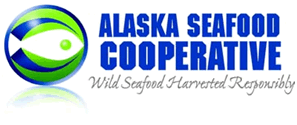SEAFOODNEWS.COM [Opinion], May 30, 2014
By John Gauvin
John Gauvin is the science director for the Alaska Seafood Cooperative, and one of the most experienced developers of gear modifications to reduce bycatch in the industry.
I read Mr. Laukitis’ opinion piece on halibut bycatch (Halibut fishermen say Bering Sea bycatch levels are unacceptable, hope to rein in groundfish fleet Seafood News May 22) with great interest. In some respects I’d like to thank Mr. Laukitis for assisting our outreach efforts for our halibut bycatch reduction work. As principal investigator of two exempted fishing permit (EFP) studies to reduce halibut bycatch on flatfish vessels (2009 and 2012) I note that the picture in Mr. Laukitis’ piece selected by the Seafood News editor came from our 2009 fieldwork – reprinted again for this article. In the picture, eight crew members (in addition to the two regular observers) on one of the four study vessels are diligently searching for halibut so they can be carefully slid over to the two sea samplers on the vessel during the study. The sea samplers were there to measure each halibut and assess its viability. The focus of the studies was on quickly releasing halibut – which is not allowed under current regulations – to improve survival.
Both studies showed that sorting the halibut on deck and rapidly returning them to the sea reduced mortality rates dramatically and may be feasible in most flatfish target fisheries. More than 90% of the halibut were sorted out on deck across the four EFP vessels in each study. On most hauls the time needed to sort out and obtain length and viability data was less than 20 minutes. These encouraging results apply to typical Bering Sea flatfish vessels as currently configured; even better results may be achieved with changes to the deck layout as vessels are replaced (a process already underway in this fleet).
Changes in fish handling procedures to allow halibut to be sorted out of the catch on deck and returned to the sea to minimize mortality (while maintaining the current high monitoring standards) are strongly supported by the Alaska Seafood Cooperative, which represents the majority of the Bering Sea flatfish fleet.
As I write this piece, they are also conducting a field research collaboration with the Alaska Fishery Science Center’s FMA Division to assess a specialized strobe camera system to collect length data from halibut sorted on deck. This system would not only speed up the process of getting halibut back into the water but would provide even more accurate accounting of halibut bycatch via a census instead of the current system of basket sampling.
The Alaska Seafood Cooperative welcomes the additional accuracy that census accounting of halibut bycatch will achieve. Deck sorting is not allowed under the current regulations but the Alaska Seafood Cooperative is working hard with NMFS to address implementation challenges and expects that it will be available as another tool in the bycatch reduction toolbox soon, perhaps as early as 2015 through a fleet-wide EFP.
In addition to their work on reducing halibut mortality rates, the members of the Alaska Seafood Cooperative have been proactive in their efforts to reduce halibut bycatch itself. These vessels have stayed well under their halibut bycatch caps since the advent of Amendment 80, which ended the race for fish and allowed fishermen to rationally decide when and where to fish. Additionally, their initial halibut allocation for Amendment 80 included a phased-in reduction in halibut bycatch from their average annual halibut usage prior to Amendment 80. The halibut bycatch reduction results since the program started are not “smoke and mirrors;” all of these boats have two full time observers and every haul is sampled. The fleet continues work hard to do even better, not only by reducing halibut mortality but also through other ongoing work with researchers in NMFS and outside institutions to reduce bycatch rates and effects of ground gear on crab.
Everyone in the Bering Sea groundfish trawl fishery (Amendment 80, Bering Sea Limited Access, pollock fishery) is working hard to reduce halibut bycatch to the extent practicable. That is the mandate under the MSA as written and it is clearly working in my opinion.
I think that the directed halibut fishery needs to join in that effort instead of taking issue with it.
That sector should be working on better enumeration of wastage and taking steps to meaningfully reduce it. The regulations for the directed fishery have a size limit that may be unrealistic given the proportion of the halibut biomass that is below the legal size. Halibut fishermen need to do what they can to avoid hooking these undersized fish and the mortality associated with removing hooks and throwing them back.
Reducing effects on these fish is another part of the overall effort needed to rebuild Bering Sea halibut that the Bering Sea groundfish fleet and Mr. Laukitis want to achieve.
-John Gauvin
Alaska Seafood Cooperative
